Walking with a stroller waiting for my wife from the store, I noticed an interesting combination of geometric shapes and lines that were made up of the edge of the hanging banner, handrails and stair railings.
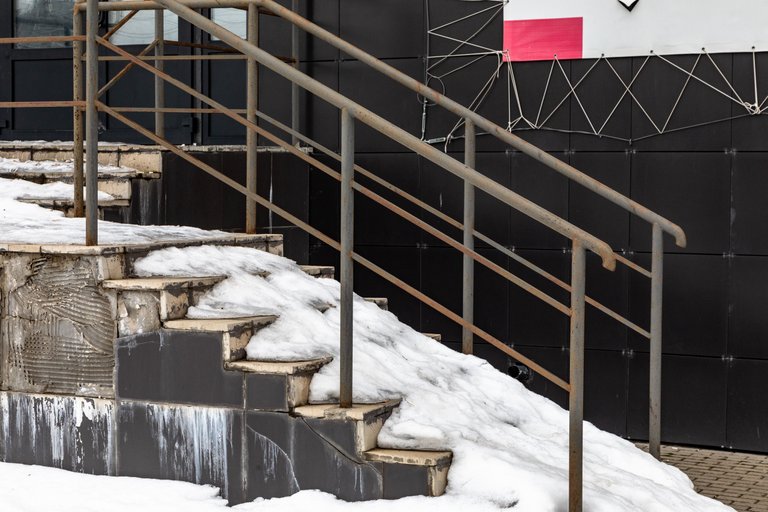
And I thought, how long can you shoot the same story from different angles so that it does not repeat itself and the composition is different?
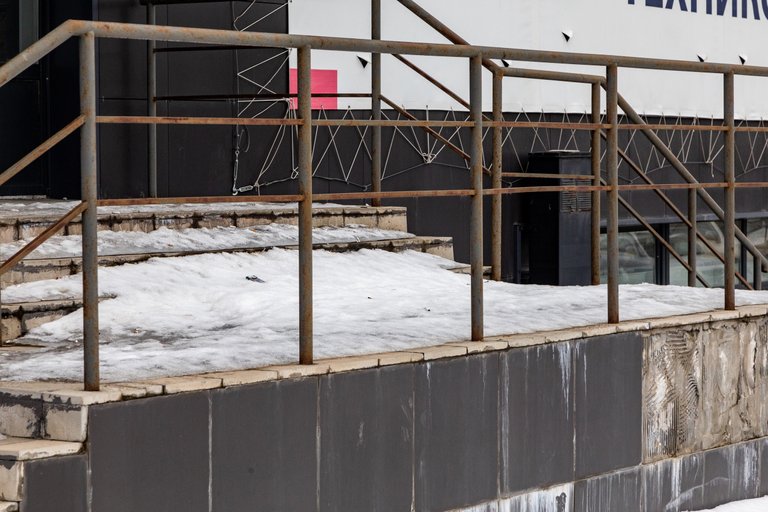
After all, the number of shooting points is physically limited and can be calculated mathematically.
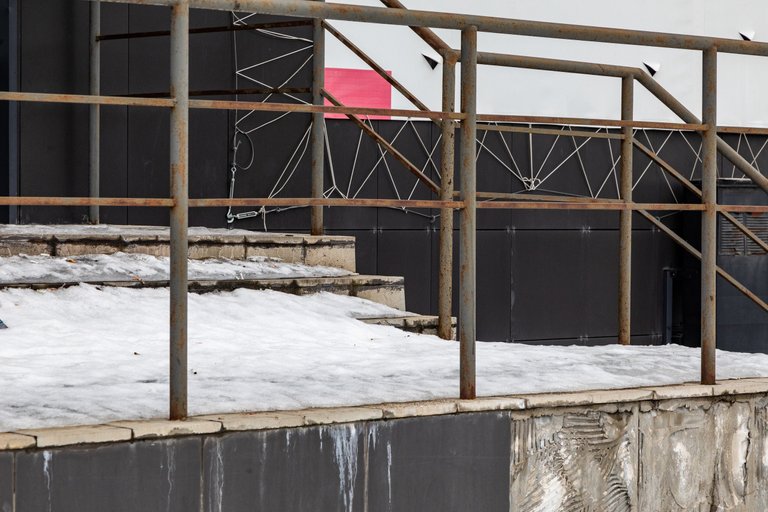
Limitations follow from the given creative task.
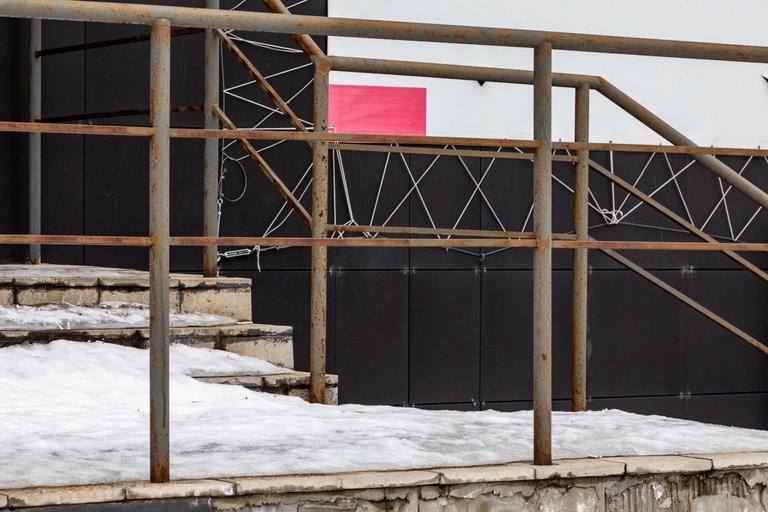
For example, if the red rectangle must necessarily be within the golden ratio, then the number of angles is reduced by several times.

Also, if the rectangle is to be read visually as a rectangular figure, not a stripe or a dot, then the number of survey points is severely limited.

Next, you need to find out if it is possible to intersect the rectangle with lines from the railing?

In general, there can be many conditions, and with each of them the number of possible angles is reduced.

Based on this, it will be possible to derive even a certain formula.

So that you understand, I was engaged in such "nonsense" in my school years.
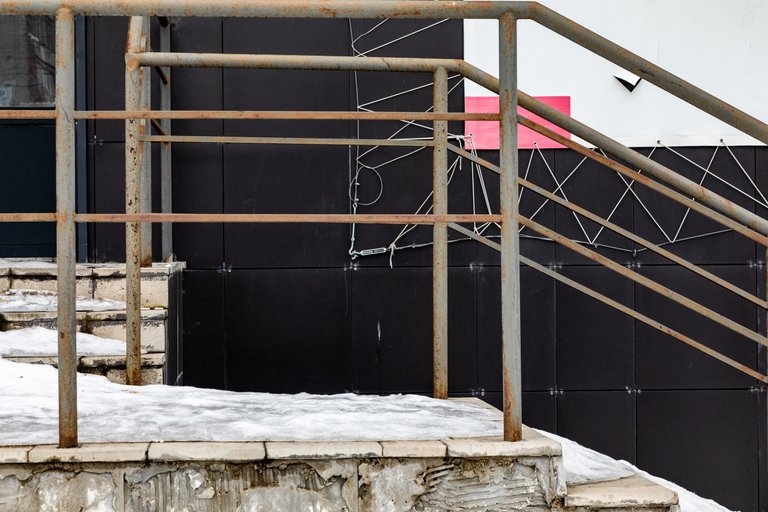
But then I thought only about the physics of the question, and now all this leads to metaphysics.
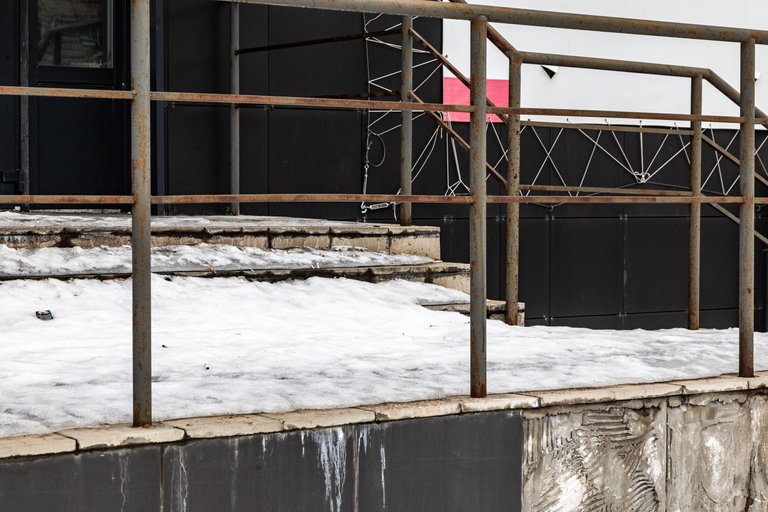
Now I'm not interested in the formula by which you can calculate the number of acceptable angles with different compositions, but in the very nature of this process.
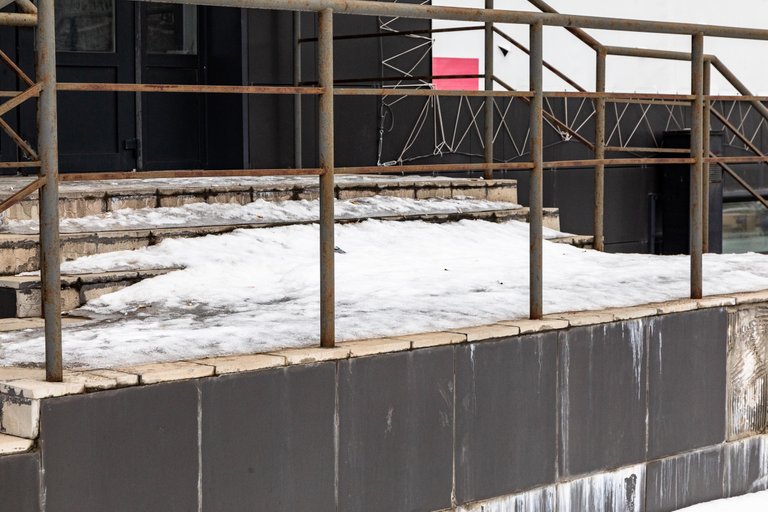
That is how it greatly affects the perception of the viewer.

You can also approach from the other side: put the camera on a tripod and record the interaction of the changing with the unchanged. That is, it will still be the same red rectangle with one composition, but people, animals, birds around will get into the frame. The landscape or lighting will change depending on the time of day and season.